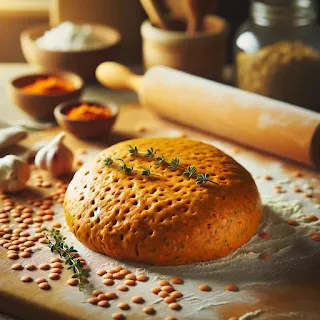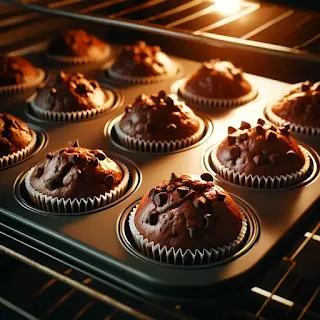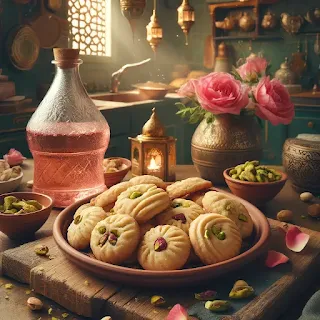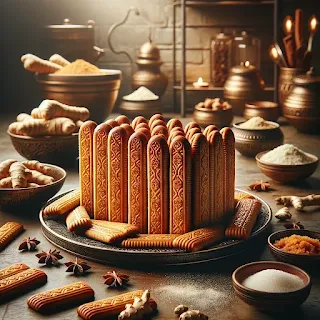Welcome back to Sam's Baking Blog! Today, I'm whipping up a batch of Lovely Banana Muffins that are perfect for a quick breakfast or a sweet snack. These muffins are moist, flavorful, and packed with the goodness of bananas.
Origin Story: Chunky Banana Muffins
Chunky Banana Muffins are a delightful and comforting treat, combining the natural sweetness of ripe bananas with the satisfying texture of chunky mix-ins like nuts and chocolate chips. These muffins are perfect for breakfast, a snack, or a dessert, and they bring a touch of home-baked goodness to any occasion.
Historical Roots
Banana bread and muffins have a rich history that dates back to the 1930s. During the Great Depression, bakers sought ways to use overripe bananas that would otherwise go to waste. This frugality led to the creation of banana bread, a recipe that quickly became popular in American households. The advent of baking powder and baking soda in the 19th century made it easier to create quick breads like banana bread and muffins, which do not require yeast.
The muffin, in its modern form, is an American innovation, evolving from the traditional English muffin and gaining popularity in the United States in the 19th century. Muffins became a convenient and versatile baked good, ideal for incorporating fruits, nuts, and other ingredients.
Cultural Significance
Banana muffins, in particular, have become a staple in American baking. They are cherished for their moist texture and rich banana flavor. Adding chunky ingredients like nuts, chocolate chips, or even dried fruits elevates the standard banana muffin, making it more indulgent and satisfying.
These muffins are often enjoyed as a comforting breakfast or snack, providing a quick and nutritious option for busy mornings. They are also a popular choice for school lunches, bake sales, and casual gatherings, loved by both children and adults.
Personal Connection
My journey with Chunky Banana Muffins began with my grandmother's recipe. She would always save overripe bananas, knowing that they were perfect for baking. Her kitchen was often filled with the sweet aroma of banana bread and muffins. The joy of mashing the bananas, mixing the batter, and watching the muffins rise in the oven is a cherished memory from my childhood.
Inspired by my grandmother's recipe, I started experimenting with different mix-ins to add more texture and flavor to the muffins. Chopped walnuts, dark chocolate chips, and even a sprinkle of cinnamon quickly became my favorite additions. These chunky mix-ins not only enhanced the flavor but also provided a satisfying crunch in every bite.
Recipe Evolution
Creating the perfect Chunky Banana Muffin involves a few key steps. The bananas should be very ripe, with brown spots on the peel, to ensure they are sweet and easy to mash. Using both baking powder and baking soda helps the muffins rise and gives them a light, fluffy texture.
The batter should be mixed gently to avoid overworking the gluten in the flour, which can make the muffins tough. Adding the chunky mix-ins at the end ensures they are evenly distributed throughout the batter. Baking the muffins at a high temperature initially, then lowering it, helps create a domed top that is both attractive and delicious.
Sharing the Tradition
Today, Chunky Banana Muffins are a favorite in my household. They are the muffins I bake when I want to share a taste of home and comfort with friends and family. Each bite is a reminder of my grandmother's kitchen and the joy of creating something special from simple ingredients.
Ingredients:
1 1/2 cups all-purpose flour
1 teaspoon baking powder
1 teaspoon baking soda
1/2 teaspoon salt
3 ripe bananas, mashed
3/4 cup granulated sugar
1 egg, lightly beaten
1/3 cup unsalted butter, melted
1 teaspoon vanilla extract
1/2 cup walnuts or chocolate chips (optional)
Prep Time: 15 minutes
Cook Time: 20-25 minutes
Yield: 12 muffins
Instructions:
- Preheat the oven to 350°F (175°C). Line a muffin tin with paper liners or grease the cups.
- In a large bowl, whisk together the flour, baking powder, baking soda, and salt.
- In another bowl, mix the mashed bananas, sugar, egg, melted butter, and vanilla extract until well combined.
- Add the wet ingredients to the dry ingredients and stir just until combined. Do not overmix. Fold in the walnuts or chocolate chips if using.
- Divide the batter evenly among the muffin cups, filling each about 3/4 full.
- Bake for 20-25 minutes, or until a toothpick inserted into the center of a muffin comes out clean.
- Let the muffins cool in the pan for 5 minutes, then transfer to a wire rack to cool completely.
Pro Tips:
- Use overripe bananas for the best flavor and sweetness.
- Do not overmix the batter to ensure the muffins stay tender.
Secret Tips:
Add a pinch of cinnamon or nutmeg to the batter for a warm, spicy note.
Serving Options:
Serve the muffins warm with a pat of butter or a drizzle of honey.
Health Benefits:
Bananas are a great source of potassium and dietary fiber.
Variations & Customization Options:
- Substitute whole wheat flour for half of the all-purpose flour for a healthier option.
- Add a tablespoon of flaxseed meal for an extra boost of fiber and nutrients.
These Lovely Banana Muffins are a delightful treat that's easy to make and perfect for any time of day. Whether you're enjoying them for breakfast or as a snack, they're sure to bring a smile to your face.
Happy baking!
Sam
















